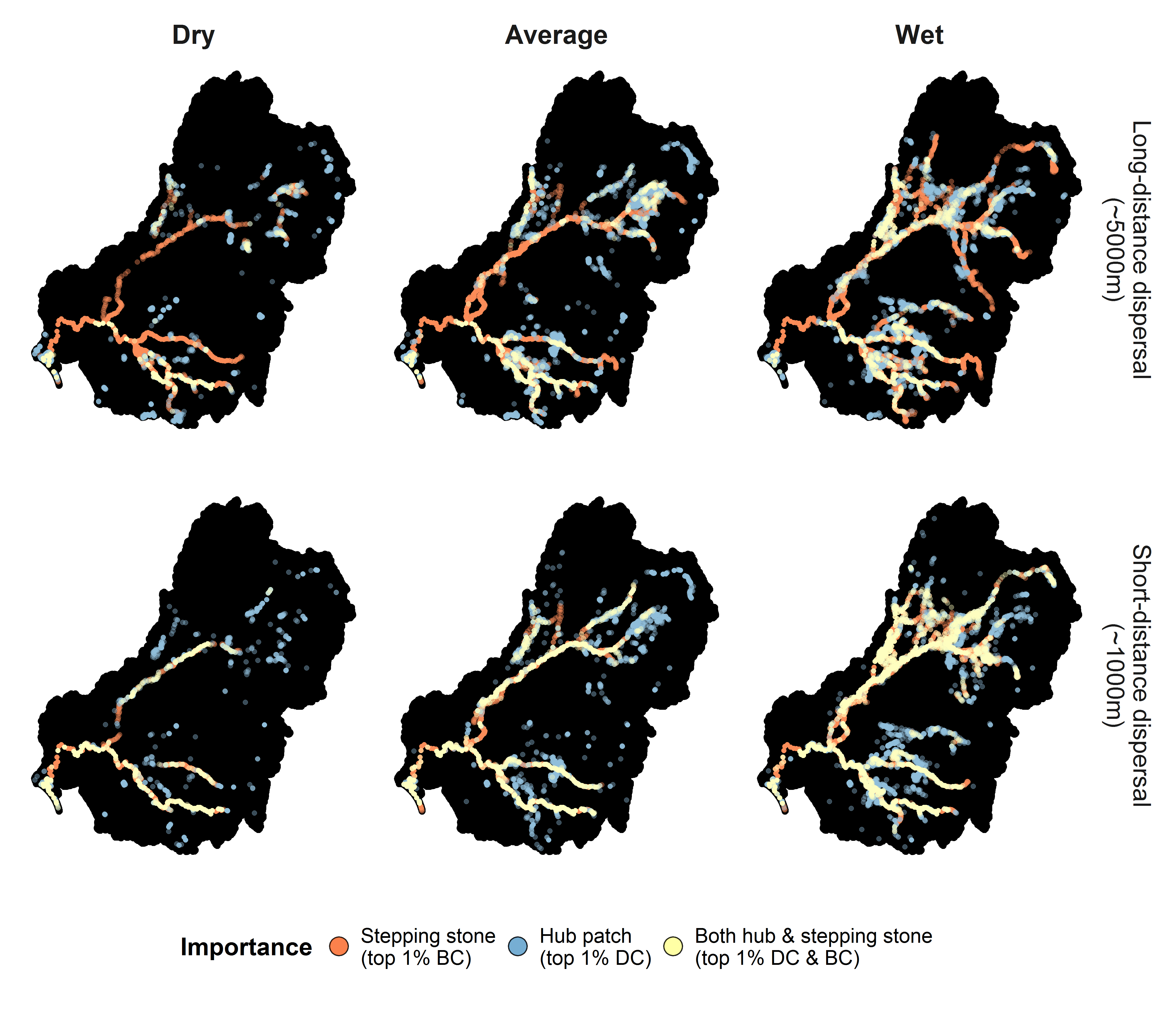Robbi's newest paper, titled "Surface-water dynamics and land use influence landscape connectivity across a major dryland region", has been accepted for publication in Ecological Applications!
Article Reference
Bishop-Taylor, R., Tulbure, M. G. and Broich, M. (2017), Surface-water dynamics and land use influence landscape connectivity across a major dryland region. Ecol Appl. Accepted Author Manuscript. doi:10.1002/eap.1507
Dataset Reference
Bishop-Taylor R, Tulbure MG, Broich M (2017) Data from: Surface-water dynamics and land use influence landscape connectivity across a major dryland region. Dryad Digital Repository. http://dx.doi.org/10.5061/dryad.qf83q
Here is the gist of our paper:
- Landscape connectivity is important for the long-term persistence of species inhabiting dryland freshwater ecosystems subject to extreme periods of drought and flooding.
- We used a newly available 25-year time series of remotely sensed surface water derived from Landsat to model regional-scale spatiotemporal connectivity dynamics consistently across space and time.
- We focused on connectivity across Australia’s 1 million km2 Murray Darling Basin, a highly modified dryland region containing some of Australia’s most biologically significant wetland ecosystems.
- Our study represents one of the largest spatially explicit ecological network analyses conducted to date (a total of 5.4 million nodes processed across 99 time-steps and two dispersal abilities).
- We identified ‘hub’ and ‘stepping stone’ habitats important for facilitating connectivity through regional-scale habitat networks, and reveal how the distribution of these habitats varies with respect to surface water dynamics and land use.
- The habitats identified by this study may serve as ideal high priority targets for land-use specific management aimed at maintaining or improving dispersal between isolated surface water habitats, potentially providing benefits to biodiversity beyond the immediate site scale.
- Our approach is directly applicable to other global regions faced with increasing threats from changing land use patterns, intensifying water resource demands or increasingly extreme surface water dynamics driven by climate change.

News date:
February 2017 